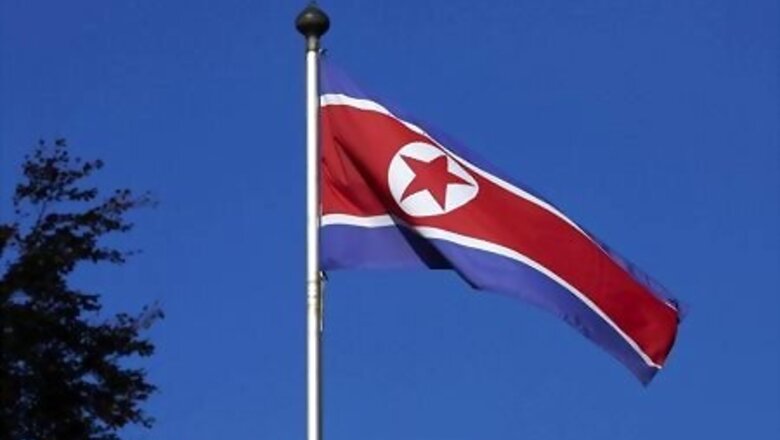
views
SEOUL: As two typhoons hammered North Korea within a week of each other, state media broadcasts looked unusually reminiscent of international TV coverage, with correspondents standing knee-deep in floodwaters to provide rare, nearly real-time reports.
Thursday’s broadcasts were the latest example of a national propaganda machine that is slowly evolving in the face of more competition from international media that seep into the isolated country, analysts said.
In unprecedented overnight broadcasts, correspondents and anchors were shown at locations around the country, shouting the latest developments while being lashed with wind and rain.
The format offered seemingly unscripted moments rarely seen on the state-controlled Korean Central Television, including one rain-drenched reporter brushing off attempts by a man trying to hand him an umbrella in the middle of a report.
“It’s surprisingly fast and honest public service reporting from KCTV unlike anything we’ve seen before,” said Martyn Williams, a researcher at 38 North, a U.S.-based think-tank that monitors North Korea.
The coverage is almost certainly part of a top-down response to leader Kim Jong Un’s recent call last week for more efforts to prevent damage from the typhoons, Williams added.
“The layers of censorship and approval needed are too complex to do this without pretty high-up approval,” he said.
EVOLVING MEDIA
The coverage reflects Kim’s policy of greater transparency and resolving issues head-on, rather than trying to hide them, said Rachel Minyoung Lee, a former North Korea open source intelligence analyst in the U.S. government.
“Damage from natural disasters has always been a highly sensitive topic for North Korean state media, and showing near-real-time news reports from flood sites on state TV was unthinkable,” she said.
Since the early days of Kim’s rule, North Korean TV has experimented with various stylistic and formatting changes, ranging from bringing in a younger generation of TV news anchors, to showing more graphics during newscasts, to emulating South Korean entertainment shows, Lee said.
“Kim Jong Un seems to have realized early on that KCTV needed to keep up with the times to compete with the influx of South Korean and foreign media and entertainment content, and that explains KCTV modernization efforts,” she said.
A MESSAGE FOR THE WORLD
In recent years, North Korea has dabbled in online media aimed at a more global audience as well.
Among them are a Twitter account with the handle @ColdNoodleFan – a nod to one of North Korea’s most famous dishes – which described itself as “Anti-war, peace advocate and unbiased news” on North Korea.
According to Colin Zwirko, a reporter at Seoul-based NK News, which specializes in North Korea, the account appears to be linked to the North Korean state-run Sogwang media group, sometimes even publishing content before it appears on official outlets.
@ColdNoodleFan – which was recently suspended by Twitter for unspecified reasons and currently displays a message by the platform warning that the account has shown “some unusual activity” – has nearly 9,000 followers, while following zero other accounts.
An English-language YouTube channel called “Echo of Hope” has gained nearly 29,000 subscribers and more than 1.5 million views with videos of “daily life” in North Korea.
Among the channel’s most popular videos are clips about a pizza restaurant in Pyongyang and smiling people at an amusement park, as well as videos about the coronavirus situation and recent floods.
A series of videos, including some under the title “What’s Up, Pyongyang?”, feature an English-speaking young woman identified as “Un A” touring various spot in the city.
In recent months, “Echo of Hope” has quietly been removing old-style videos of North Korea’s former leaders, focusing instead on the newer videos that gather many more viewers, Williams found.
And North Korea’s Chinese-language efforts appear to be even more successful, with 533,000 followers on Weibo, according to Williams.
“The goals of these initiatives seem to be to saturate social media with some positive messages on North Korea, or at least make people sceptical about what they read about North Korea elsewhere,” Zwirko said.
Disclaimer: This post has been auto-published from an agency feed without any modifications to the text and has not been reviewed by an editor
















Comments
0 comment